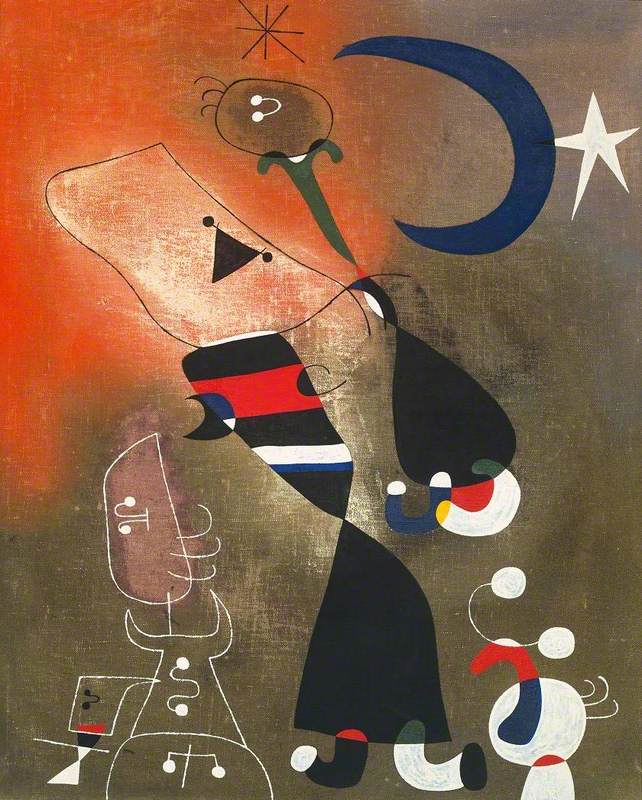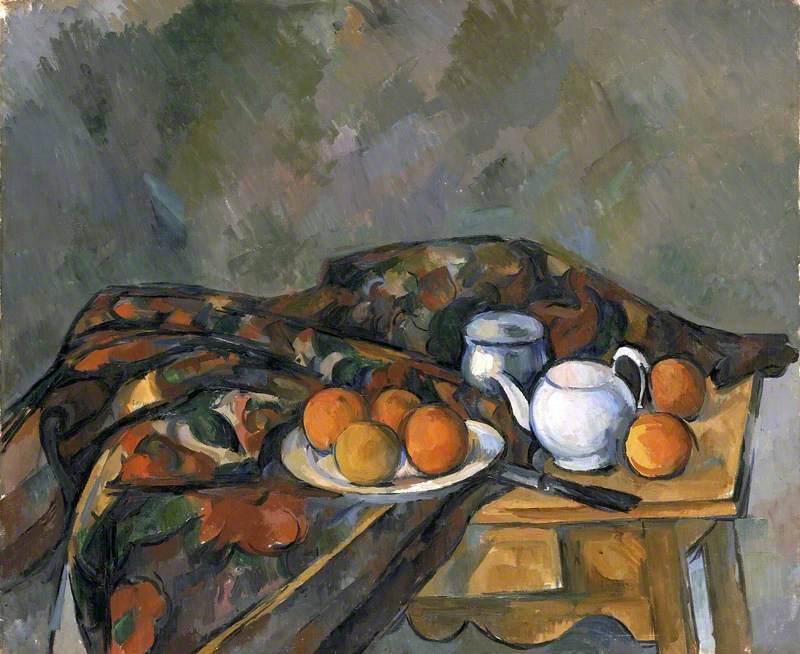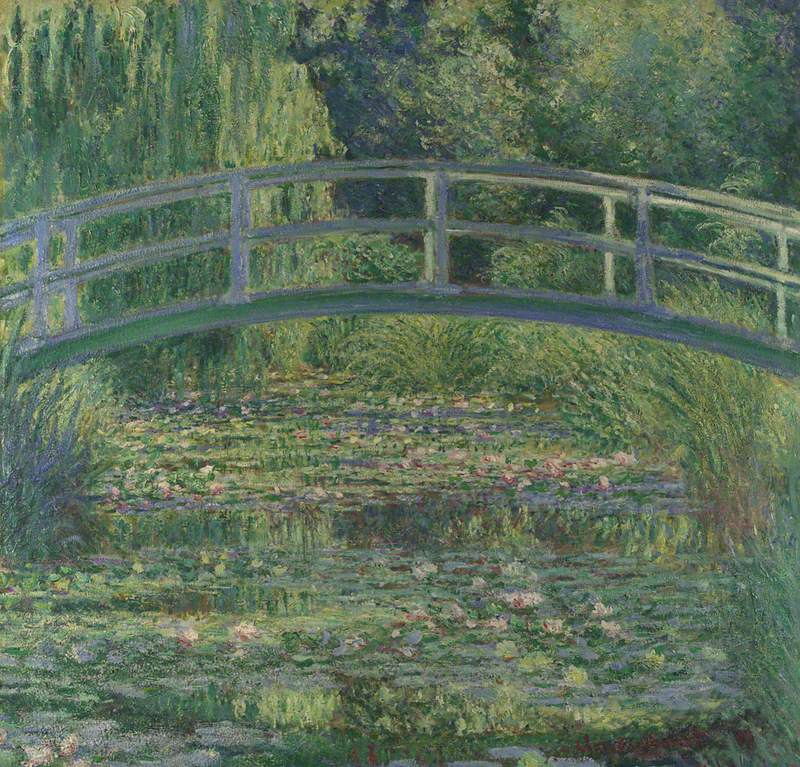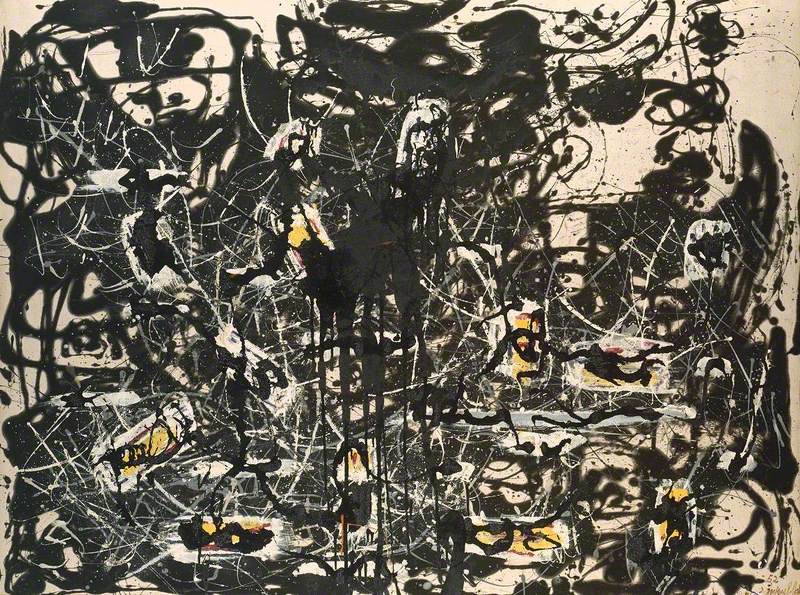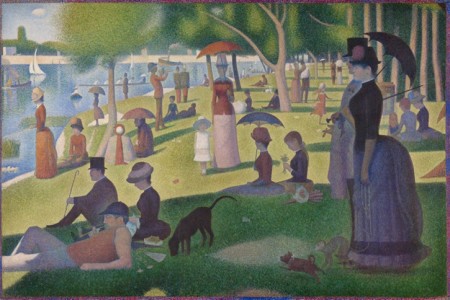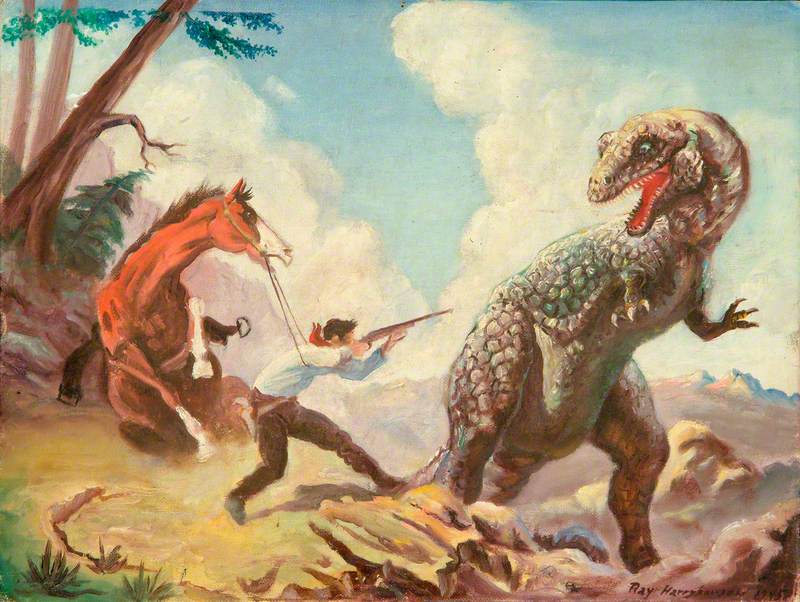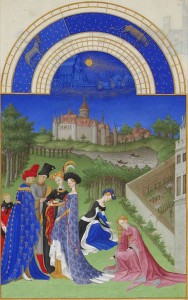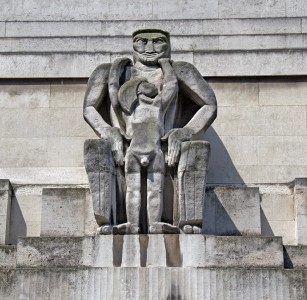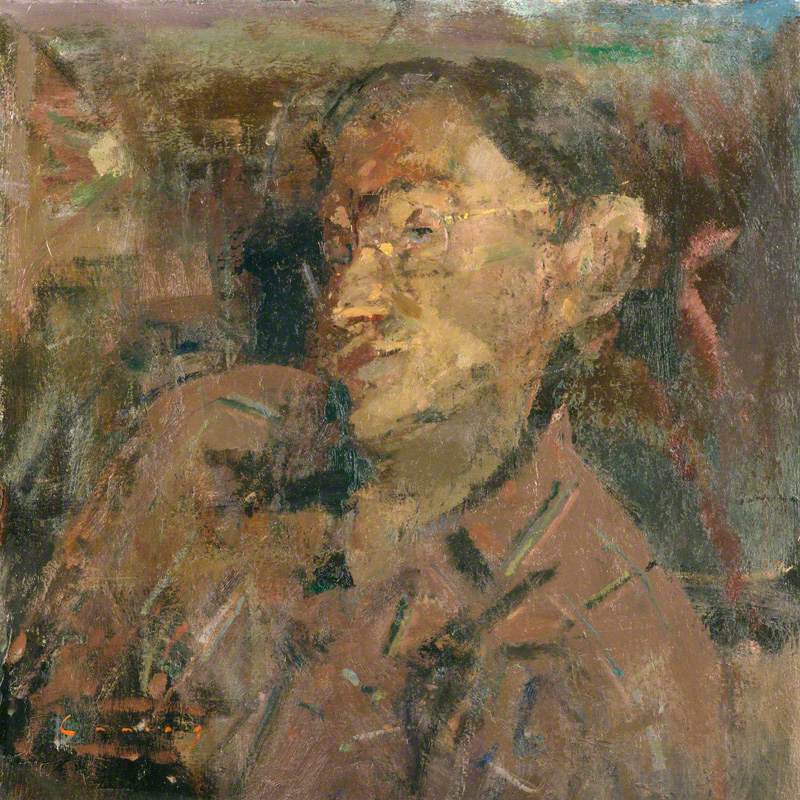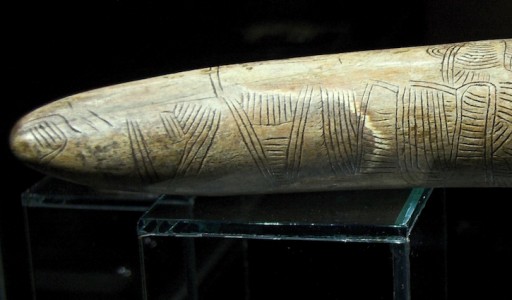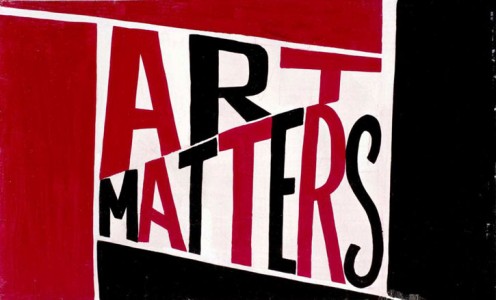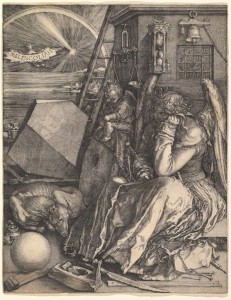Still from The Simpsons, Season 2, Episode 17 – ‘Old Money’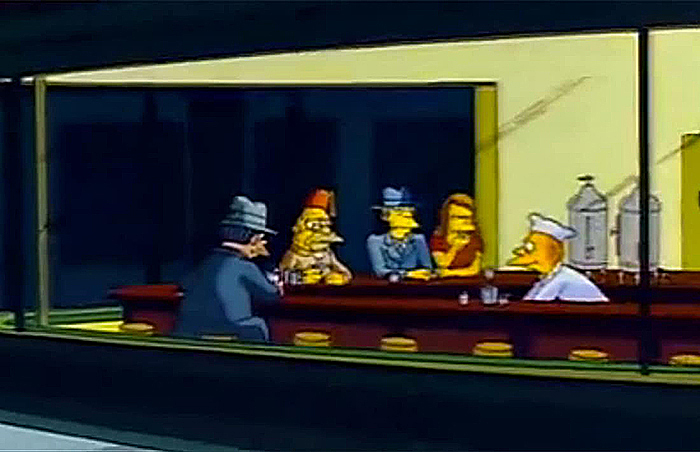
Art Matters is the podcast that brings together pop culture and art history, hosted by Ferren Gipson.
Download and subscribe on iTunes, Stitcher or TuneIn
Let's take a trip to the sunny town of Springfield – wherever that is. For nearly thirty years, we've gotten to know Homer, Marge, Bart, Lisa, Maggie, and the many quirky characters living in the town of Springfield. At its heart, it's an animated series designed to make us laugh, but The Simpsons offers us a glimpse into 20th-century American culture in a way that resonates with people across the world.
I had a conversation with Emily VanDerWerff, critic at large for Vox, discussing the iconic series and how the cartoon has used art as a way to deepen conversations around pop culture. 'It's a show that was willing to skewer TV convention. It's a show that really dug into the cliches and tropes of television in a way that unpacked them and was also very funny.' says VanDerWerff. She counts The Simpsons among her favourite television shows and, given the length of the show's run, it's clear that she's not alone in that feeling. I was interested to find out what makes the show so special.
Still from The Simpsons, Season 9, Episode 17 – 'Lisa The Simpson'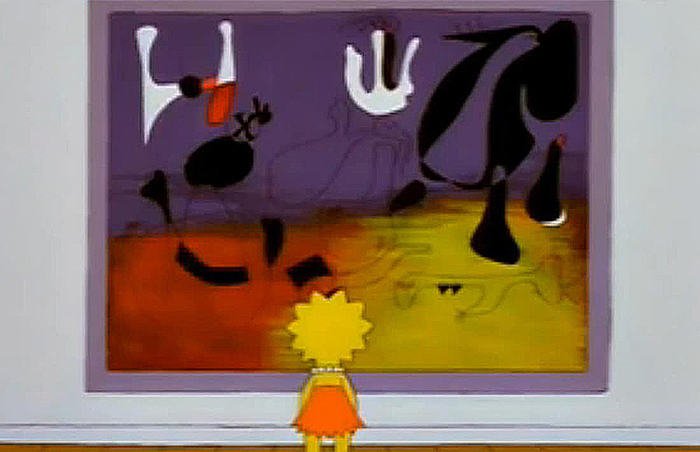
Still from The Simpsons, Season 11, Episode 12 – 'The Mansion Family'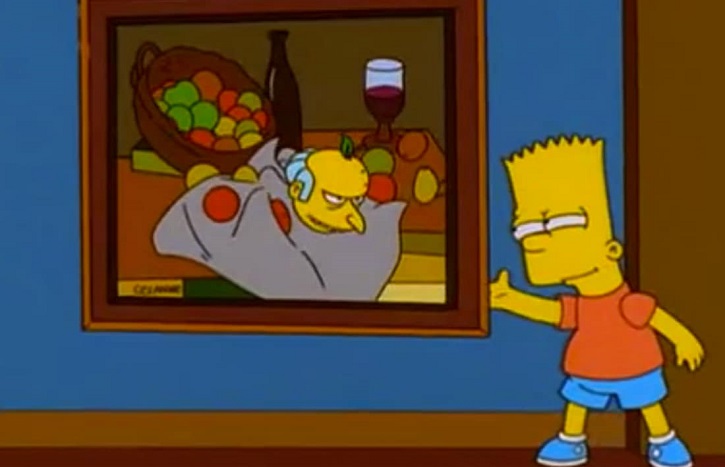
One of the running gags of the show is that everyone tries to figure out where the town of Springfield is located. I wondered if it was a way of making the town a sort of 'Anytown, USA', where anyone could see their own city in the people and places of Springfield. 'Yeah, I think that that's really true.' Emily says. 'But also it lets them have mountains right next to Springfield, they have the ocean right next to Springfield – the city can be any size they want to tell whatever sort of story they want. It's kind of like the Tardis in Doctor Who – it's far larger on the inside than it appears.' The name is common enough to be believable, but so prevalent that you can't quite place it. It could be a town in any US state, and this seems in keeping with the strong themes of American culture found throughout the series.
When I started researching the many art references that occur across the series, I noticed several nods to quintessentially American images like paintings by Norman Rockwell, Grant Wood's American Gothic, and Edward Hopper's Nighthawks. It seemed that there was a conscious effort to highlight American visual culture.
'One of the things that's interesting about The Simpsons is that it's kind of an encapsulation and distillation of 20th-century American pop culture... One of the things that is reflected in is in the references to art,' says VanDerWerff. 'Certainly there are references to great classics of the pre-20th-century period, but a lot of the paintings – especially the American ones – are 20th-century paintings... When The Simpsons deals with art, it is often explicitly dealing with 20th-century American art because that's part of its core mission statement to distil American culture of the 20th-century into its finest form and then display it to the world.'
Still from The Simpsons, Season 5, Episode 17 – 'Bart Gets an Elephant'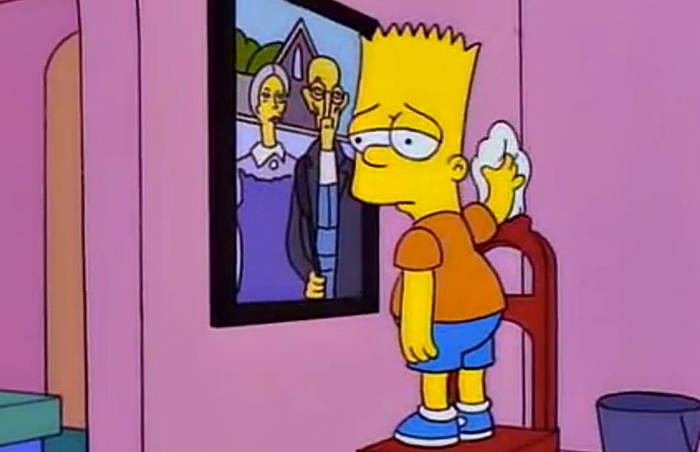
What happens when pop culture appropriates art?
Lovers of art may be accustomed to the idea of Pop Artists appropriating popular culture in their works, but shows like The Simpsons turn this idea on its head. Pop culture references can help to extend the life of artworks and re-contextualise pieces for the present day, but this can also have the by-product of injecting new meanings.
'When you see American Gothic now, you're almost seeing all of the times it's been referenced and parodied within other pop culture – whether that's The Simpsons or I think the Muppets did something with it,' says VanDerWerff. 'Now when you see the painting, you're bringing all of that baggage to it.'
Mom and Pop Art
Now, let's dig into some specific art moments that happen in the series starting with what I consider the strongest grouping of these examples in any one episode. It's episode 19 of Season 10, titled 'Mom and Pop Art', and in it we see Homer become an accidental outsider artist after disastrously failing at putting together a barbeque. When his work is placed in a Springfield museum, we're given a walking tour of some of the most famous paintings in art history that, of course, happen to be right in Springfield.
Still from The Simpsons, Season 10, Episode 19 – 'Mom and Pop Art'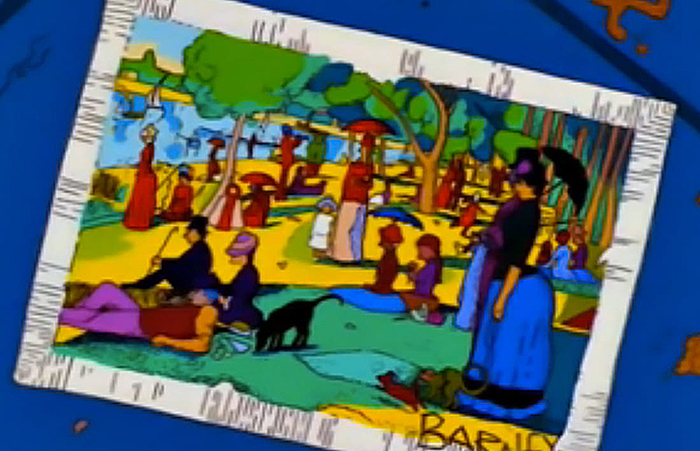
Study for 'A Sunday on the Island of La Grand Jatte': Couple Walking
Georges Seurat (1859–1891) 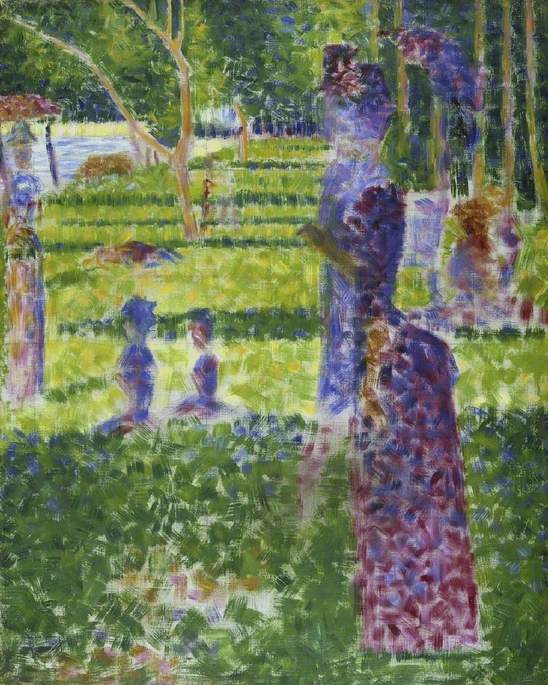
Still from The Simpsons, Season 10, Episode 19 – 'Mom and Pop Art'
The episode offers a light art history lesson, and in one poignant moment where Marge is discussing the work of Claes Oldenburg, she says he 'defied convention and embraced American popular culture.' This feels like a self-referential moment that ties together the connection between fine art and the pop culture giant that The Simpsons has come to be.
The Crepes of Wrath
Going back further, there's an early episode in season one called 'The Crepes of Wrath', which TV Guide once named the 17th greatest episode of television of all time. It may be the first use of art references in the series, and even the title is a pun on an American classic, the John Steinbeck novel The Grapes of Wrath.
Still from The Simpsons, Season 1, Episode 11 – 'The Crepes of Wrath'
Still from The Simpsons, Season 1, Episode 11 – 'The Crepes of Wrath'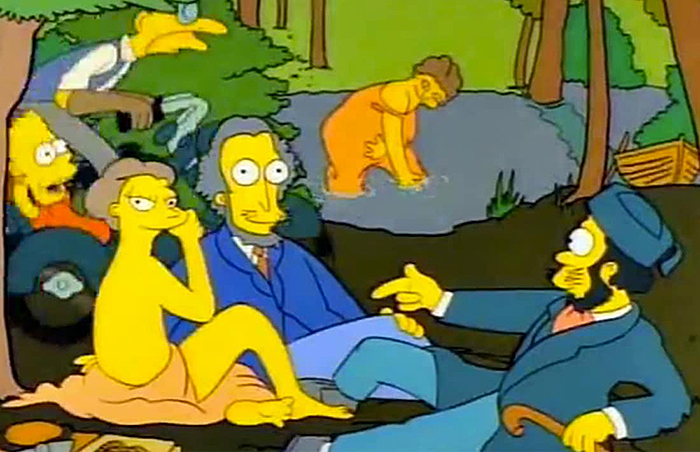
Study for 'Le Déjeuner sur l'herbe'
c.1863–1868
Édouard Manet (1832–1883) 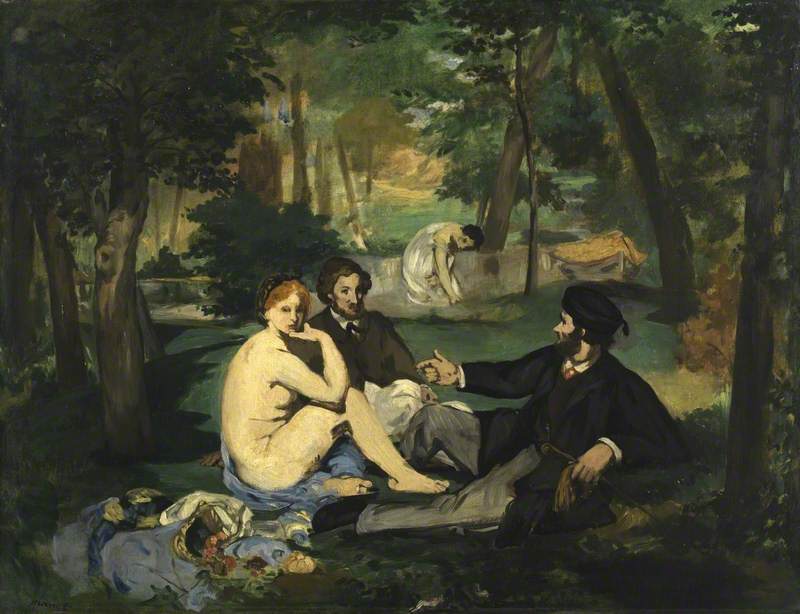
In the episode, Bart goes to France on an exchange programme and is exploited to help make wine. He's collected from the airport, driven through the French countryside, and passes through scenes of famous French paintings.
'Buried in the background of this otherwise frenetic Simpsons episode is not only a little art history lesson, but an art history lesson for a specific place,' says VanDerWerff. 'It's certainly affectionate and I've always felt that it adds a layer to an episode that, without it, would not be one of the strongest Simpsons episodes.'
Listen to the full episode to hear us discuss these episodes in full and dive a little deeper into why The Simpsons is a show that's loved across generations and nations.
SIMPSONS FANS: please note that in the recorded version of the podcast, Emily mentions that Marge paints one of the Beatles, and says she thinks it's George. While George Harrison does appear in the fifth season episode 'Homer's Barbershop Quartet', it is of course Ringo who is object of Marge's artistic endeavours! D'oh!
Explore more
O say, can you see... American artists in UK collections?
Lights, camera, paintings: art in the movies
Listen to our other Art Matters podcast episodes
